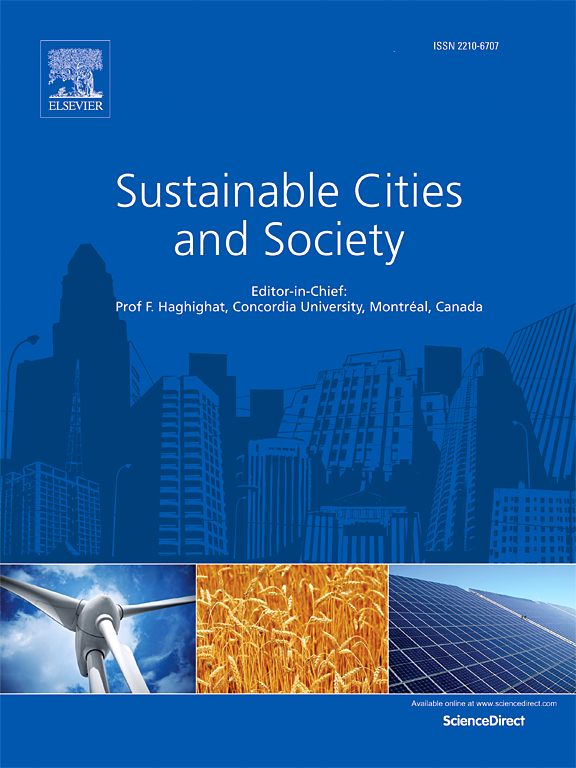Enhancing urban water resilience through stormwater reuse for toilet flushing
IF 10.5
1区 工程技术
Q1 CONSTRUCTION & BUILDING TECHNOLOGY
引用次数: 0
Abstract
Droughts can sometimes make water supply critical, particularly in urban areas, which are particularly vulnerable to water scarcity due to the growing demand caused by urbanization. To improve the resilience of water networks, the use of alternative water resources, such as rainwater, can support traditional networks. The present study proposes a new version of an analytic-probabilistic approach to evaluate the probability of stormwater reuse for toilet flushing. It considers water demand as a random variable in the modelling, simplifies the contribution of previous rainfalls to rainwater availability, and makes use of a cloud-streaming platform for the statistical analysis and predictions of users’ consumptions. The equations were tested in a case study in a residential district of the city of Palermo (Italy), where a field campaign collected measurements for water demand from toilet flushing for different users and roof surfaces. The validation of the new formulas confirms the reliability of the model, which allows for expeditious verification of the efficiency of rainwater harvesting systems under different weather and demand conditions. It serves as a supporting tool in both the design and performance estimation of such systems, contributing to the sustainable management of water resources.

求助全文
约1分钟内获得全文
求助全文
来源期刊

Sustainable Cities and Society
Social Sciences-Geography, Planning and Development
CiteScore
22.00
自引率
13.70%
发文量
810
审稿时长
27 days
期刊介绍:
Sustainable Cities and Society (SCS) is an international journal that focuses on fundamental and applied research to promote environmentally sustainable and socially resilient cities. The journal welcomes cross-cutting, multi-disciplinary research in various areas, including:
1. Smart cities and resilient environments;
2. Alternative/clean energy sources, energy distribution, distributed energy generation, and energy demand reduction/management;
3. Monitoring and improving air quality in built environment and cities (e.g., healthy built environment and air quality management);
4. Energy efficient, low/zero carbon, and green buildings/communities;
5. Climate change mitigation and adaptation in urban environments;
6. Green infrastructure and BMPs;
7. Environmental Footprint accounting and management;
8. Urban agriculture and forestry;
9. ICT, smart grid and intelligent infrastructure;
10. Urban design/planning, regulations, legislation, certification, economics, and policy;
11. Social aspects, impacts and resiliency of cities;
12. Behavior monitoring, analysis and change within urban communities;
13. Health monitoring and improvement;
14. Nexus issues related to sustainable cities and societies;
15. Smart city governance;
16. Decision Support Systems for trade-off and uncertainty analysis for improved management of cities and society;
17. Big data, machine learning, and artificial intelligence applications and case studies;
18. Critical infrastructure protection, including security, privacy, forensics, and reliability issues of cyber-physical systems.
19. Water footprint reduction and urban water distribution, harvesting, treatment, reuse and management;
20. Waste reduction and recycling;
21. Wastewater collection, treatment and recycling;
22. Smart, clean and healthy transportation systems and infrastructure;
 求助内容:
求助内容: 应助结果提醒方式:
应助结果提醒方式:


